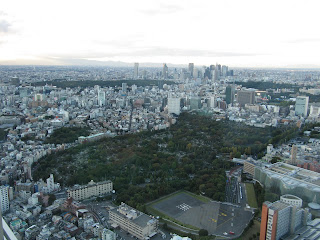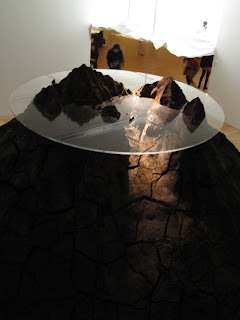The day before Soko's wedding Aya and I went to the Adachi Museum in Matsue. This is one of the "top rated Japanse Gardens in Japan", according to an American Magazine on Japanese Gardens. I find that kind of like a Japanese magazine ranking suburban neighborhood develoments in the US. Great example of 'Shakkei', or 'borrowed landscape' in Japanese garden design
Great example of 'Shakkei', or 'borrowed landscape' in Japanese garden design
 Great example of 'Shakkei', or 'borrowed landscape' in Japanese garden design
Great example of 'Shakkei', or 'borrowed landscape' in Japanese garden design Stone Bridge connecting 'islands in the sea'
Stone Bridge connecting 'islands in the sea'
 Stone pathway of islands
Stone pathway of islands I have to believe that the leaves did not fall in quite the perfect order that they appear to in this garden. But it does make a nice effect.
I have to believe that the leaves did not fall in quite the perfect order that they appear to in this garden. But it does make a nice effect.
 I like the pattern of islands and the line of roof tiles
I like the pattern of islands and the line of roof tiles Maple and moss
Maple and moss Spring detail
Spring detail It just seems too perfect to me.
It just seems too perfect to me.

























































